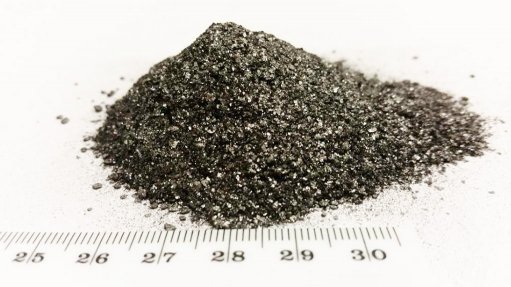Mineworker indebtedness a major worry post five-month strike


AFTER-EFFECTS Mineworkers may now find themselves in a more detrimental financial position than before the five-month strike in the platinum sector
Photo by Reuters
While mineworkers have resumed work on the platinum belt in the Rustenburg area and are generally pleased with the outcome of the wage agreements reached subsequent to the five-month-long strike, what remains a worry is the present state of their credit records.
Data from credit bureau Compuscan reveals that mineworkers may now find themselves in a more detrimental financial position than before the strike. What is equally concerning is the ripple effect that the level of overindebtedness has had on credit providers and local businesses, Compuscan senior data analyst Jacobus Eksteen tells Mining Weekly.
The study was based on a representative sample of mineworkers, with an average age of 36 years, who live in Rustenburg and work at the three major platinum mines, namely Impala Platinum, Anglo American Platinum and Lonmin, and who earned an average monthly income of R10 000 at the time of the strike.
Compuscan’s data, which included information on secured and unsecured credit, but predom-inantly unsecured loans, indicates that mine-workers’ overdue debt increased a staggering ninefold at the height of the strike.
The data revealed that striking miners’ finan-cial standing worsened over the time of the strike. Without salaries, their dependence on credit increased and the need to borrow for basic necessities such as food, school fees and clothing became a prevalent reality. Nonstriking individuals who were not receiving selective aid, including food parcels, were also hard-hit,” says Eksteen.
Meanwhile, prior to the strike, Compuscan’s data indicated that the average miner owed a total of R100 000 in accumulated debt and was paying back R5 000 a month. The concern is that the amount in overdue debt increased to an average of about R9 000 during the strike.
While 73% of miners were overdue on one account or more in the three months prior to the strike, this percentage rose to almost 88% after the strike.
Further, of concern is that 56% of miners’ accounts were three or more months in arrears, and thus considered bad, before they downed tools; however, as time rolled on, with matters unresolved, the situation elevated to the point that 62% of the average miner’s accounts were considered bad.
“This bad debt is not likely to be recovered and it is probable that most of these borrowers will be handed over to debt collectors, receive judgments to pay their debt or, worst-case scenario, have accounts written off,” says Eksteen.
Not only did the strike have a knock-on effect on miners’ credit records and their ability to repay their debt, but the ramifications also notably affected credit providers, including microlenders, for several reasons.
The most obvious reason was that a significant percentage of miners who had taken out loans were unable to repay their debt timeously, thus, with a decrease in the average miner’s credit score, the risk involved in lending to them increased.
Meanwhile, contrary to fears that the strike would lead to reckless lending, it appeared that most credit providers were, in fact, cautious about granting loans, particularly to new striking clients without payslips, as they prioritised assisting nonstriking current clients that had proof of income.
The study revealed that a mere 21% of miners were granted new credit agreements within a three-month period during the strike, compared with 49% that opened accounts in the three months prior to the strike.
The data indicated that credit providers primarily granted one-month loans, unless the applicant’s income was high enough to afford a term loan.
Further, credit providers seemed to be under-standing of the predicament as they did not hand over striking miners who attempted to restructure their loans.
Comments
Press Office
Announcements
What's On
Subscribe to improve your user experience...
Option 1 (equivalent of R125 a month):
Receive a weekly copy of Creamer Media's Engineering News & Mining Weekly magazine
(print copy for those in South Africa and e-magazine for those outside of South Africa)
Receive daily email newsletters
Access to full search results
Access archive of magazine back copies
Access to Projects in Progress
Access to ONE Research Report of your choice in PDF format
Option 2 (equivalent of R375 a month):
All benefits from Option 1
PLUS
Access to Creamer Media's Research Channel Africa for ALL Research Reports, in PDF format, on various industrial and mining sectors
including Electricity; Water; Energy Transition; Hydrogen; Roads, Rail and Ports; Coal; Gold; Platinum; Battery Metals; etc.
Already a subscriber?
Forgotten your password?
Receive weekly copy of Creamer Media's Engineering News & Mining Weekly magazine (print copy for those in South Africa and e-magazine for those outside of South Africa)
➕
Recieve daily email newsletters
➕
Access to full search results
➕
Access archive of magazine back copies
➕
Access to Projects in Progress
➕
Access to ONE Research Report of your choice in PDF format
RESEARCH CHANNEL AFRICA
R4500 (equivalent of R375 a month)
SUBSCRIBEAll benefits from Option 1
➕
Access to Creamer Media's Research Channel Africa for ALL Research Reports on various industrial and mining sectors, in PDF format, including on:
Electricity
➕
Water
➕
Energy Transition
➕
Hydrogen
➕
Roads, Rail and Ports
➕
Coal
➕
Gold
➕
Platinum
➕
Battery Metals
➕
etc.
Receive all benefits from Option 1 or Option 2 delivered to numerous people at your company
➕
Multiple User names and Passwords for simultaneous log-ins
➕
Intranet integration access to all in your organisation



















